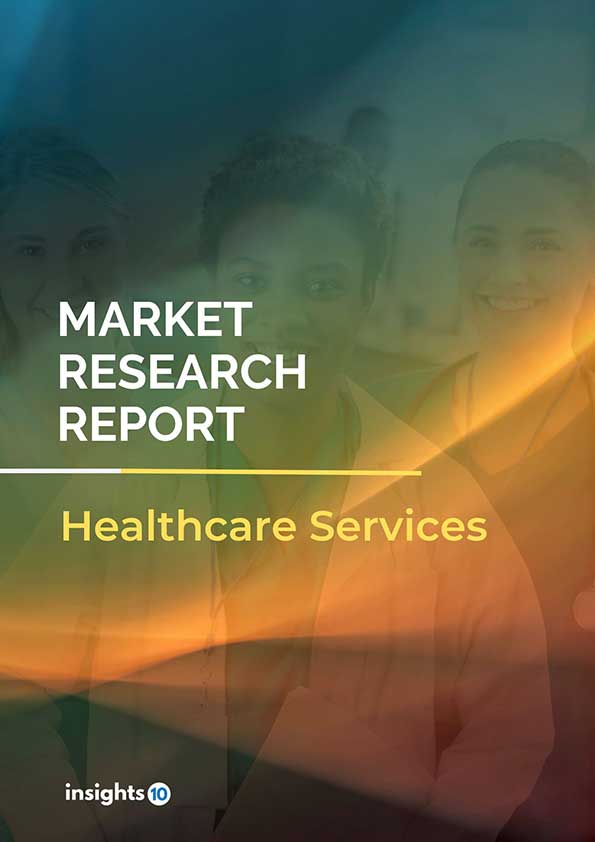Thailand Artificial Intelligence (AI) in Diagnostics Market Analysis
Thailand's Artificial Intelligence (AI) in the diagnostics market is projected to grow from $xx Bn in 2022 to $xx Bn by 2030, registering a CAGR of xx% during the forecast period of 2022-30. The market will be driven by a rise in chronic illnesses and increasing investment by the government. The market is segmented by component & by diagnosis. Some of the major players include IBM Watson Health, Siemens Healthineers & Philips Healthcare.
Buy Now

Thailand Artificial Intelligence (AI) in Diagnostics Market Executive Summary
Thailand's Artificial Intelligence (AI) in the diagnostics market is projected to grow from $xx Bn in 2022 to $xx Bn by 2030, registering a CAGR of xx% during the forecast period of 2022-30. Thailand has high-quality healthcare, and treatment can be both better and less expensive than in certain Western nations. The bulk of medical facilities is concentrated in metropolitan cities, particularly Bangkok. According to the WHO statistics published in 2020, the number of Coronary Heart Disease fatalities in Thailand reached 51,305, accounting for 11.53% of all fatalities.
AI would allow healthcare providers to evaluate huge volumes of data, such as medical imaging, test results, and patient history, to make more educated and accurate diagnoses. It might be used to detect cancer, triage critical medical imaging findings, flag acute anomalies, help radiologists prioritise life-threatening patients, diagnose cardiac arrhythmias, predict stroke outcomes, and aid in chronic disease management.
Chulalongkorn University and Siriraj Hospital have created an AI-powered diagnostics tool that can aid radiologists spot lung cancer early. Deep learning algorithms are used to analyse CT images and detect early symptoms of lung cancer. Ramathibodi Hospital has collaborated with VUNO, a Korean AI firm, to create an AI-powered diagnostic tool to help radiologists detect cerebral haemorrhages. Bumrungrad International Hospital has collaborated with Microsoft to create an AI-powered diagnostic tool to help clinicians spot cervical cancer early.
Market Dynamics
Market Growth Drivers
The Ministry of Digital Economy and Society (MDES) has undertaken a number of programmes to help Thailand develop AI technology, particularly those used in healthcare. Thailand, like many other nations in the area, is witnessing an ageing population and a rise in chronic illnesses. This has resulted in an increase in demand for healthcare services, as well as the use of AI diagnostics to enhance patient outcomes. Thailand has a thriving startup environment, notably in the healthcare industry, which offers prospects for the development of novel AI diagnostic solutions. Some firms are working on AI-powered diagnostic tools to help healthcare practitioners make diagnoses.
Market Restraints
Thailand's regulatory framework for AI diagnostics is still in its early stages, which might cause uncertainty for businesses and health professionals. Data privacy and security concerns might make it difficult for organisations to acquire and use patient data for the development of AI diagnostic tools. The use of AI in diagnostics demands a staff that is skilled and prepared to use these technologies. This can be difficult in a nation like Thailand, where experienced personnel in the healthcare field may be in scarce.
Competitive Landscape
Key Players
- IBM Watson Health
- Siemens Healthineers
- Philips Healthcare
- GE Healthcare
- Google Health
- AliveCor, Inc.
- Riverain Technologies
- Niramai
Notable Deals
February 2023, GE HealthCare to Acquire Caption Health The acquisition adds AI-enabled image guiding to the ultrasound device portfolios of GE HealthCare's $3 billion Ultrasound division
Healthcare Policies and Regulatory Landscape
The Thai Food and Drug Administration (Thai FDA) regulates medicines, biologics, and medical devices in Thailand, which is overseen by the Ministry of Public Health (MOPH). The Thai FDA's Medical Device Control Division is the primary regulatory authority in charge of medical device pre- and post-marketing in the Country. The risk classification system outlined in the ASEAN Medical Device Directive (AMDD) went into effect on February 15, 2021, resulting in substantial modifications to Thailand's classification scheme and registration for medical devices. The Medical Device Act divides medical devices into three categories based on the amount of danger they pose to individuals and the wider public.
Reimbursement Scenario
The Social Security System (SSS) is overseen by the Social Security Office and funded by a three-way split of government, employer, and employee payments. It applies to employees as well as employers that have one or more employees.
The Social Security Office administers The Civil Servant Medical Benefit Scheme (CSMBS), which offers health care benefits to government personnel and their relatives (spouse, parents, and up to three children).
The MOPH administers the Universal Health Coverage Plan (UCS), which covers the remaining population not covered by the SSS or the CSMBS.
1. Executive Summary
1.1 Digital Health Overview
1.2 Global Scenario
1.3 Country Overview
1.4 Healthcare Scenario in Country
1.5 Digital Health Policy in Country
1.6 Recent Developments in the Country
2. Market Size and Forecasting
2.1 Market Size (With Excel and Methodology)
2.2 Market Segmentation (Check all Segments in Segmentation Section)
3. Market Dynamics
3.1 Market Drivers
3.2 Market Restraints
4. Competitive Landscape
4.1 Major Market Share
4.2 Key Company Profile (Check all Companies in the Summary Section)
4.2.1 Company
4.2.1.1 Overview
4.2.1.2 Product Applications and Services
4.2.1.3 Recent Developments
4.2.1.4 Partnerships Ecosystem
4.2.1.5 Financials (Based on Availability)
5. Reimbursement Scenario
5.1 Reimbursement Regulation
5.2 Reimbursement Process for Diagnosis
5.3 Reimbursement Process for Treatment
6. Methodology and Scope
Artificial Intelligence (AI) in Diagnostics Market Segmentation
- By Component Outlook Type (Revenue, USD Billion):
- Software
- Hardware
- Services
- By Diagnosis Outlook Type (Revenue, USD Billion):
- Cardiology
- Oncology
- Pathology
- Radiology
- Chest and Lung
- Neurology
- Others
Methodology for Database Creation
Our database offers a comprehensive list of healthcare centers, meticulously curated to provide detailed information on a wide range of specialties and services. It includes top-tier hospitals, clinics, and diagnostic facilities across 30 countries and 24 specialties, ensuring users can find the healthcare services they need.
Additionally, we provide a comprehensive list of Key Opinion Leaders (KOLs) based on your requirements. Our curated list captures various crucial aspects of the KOLs, offering more than just general information. Whether you're looking to boost brand awareness, drive engagement, or launch a new product, our extensive list of KOLs ensures you have the right experts by your side. Covering 30 countries and 36 specialties, our database guarantees access to the best KOLs in the healthcare industry, supporting strategic decisions and enhancing your initiatives.
How Do We Get It?
Our database is created and maintained through a combination of secondary and primary research methodologies.
1. Secondary Research
With many years of experience in the healthcare field, we have our own rich proprietary data from various past projects. This historical data serves as the foundation for our database. Our continuous process of gathering data involves:
- Analyzing historical proprietary data collected from multiple projects.
- Regularly updating our existing data sets with new findings and trends.
- Ensuring data consistency and accuracy through rigorous validation processes.
With extensive experience in the field, we have developed a proprietary GenAI-based technology that is uniquely tailored to our organization. This advanced technology enables us to scan a wide array of relevant information sources across the internet. Our data-gathering process includes:
- Searching through academic conferences, published research, citations, and social media platforms
- Collecting and compiling diverse data to build a comprehensive and detailed database
- Continuously updating our database with new information to ensure its relevance and accuracy
2. Primary Research
To complement and validate our secondary data, we engage in primary research through local tie-ups and partnerships. This process involves:
- Collaborating with local healthcare providers, hospitals, and clinics to gather real-time data.
- Conducting surveys, interviews, and field studies to collect fresh data directly from the source.
- Continuously refreshing our database to ensure that the information remains current and reliable.
- Validating secondary data through cross-referencing with primary data to ensure accuracy and relevance.
Combining Secondary and Primary Research
By integrating both secondary and primary research methodologies, we ensure that our database is comprehensive, accurate, and up-to-date. The combined process involves:
- Merging historical data from secondary research with real-time data from primary research.
- Conducting thorough data validation and cleansing to remove inconsistencies and errors.
- Organizing data into a structured format that is easily accessible and usable for various applications.
- Continuously monitoring and updating the database to reflect the latest developments and trends in the healthcare field.
Through this meticulous process, we create a final database tailored to each region and domain within the healthcare industry. This approach ensures that our clients receive reliable and relevant data, empowering them to make informed decisions and drive innovation in their respective fields.
To request a free sample copy of this report, please complete the form below.
We value your inquiry and offer free customization with every report to fulfil your exact research needs.








































